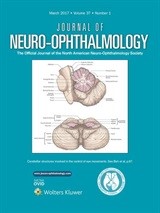Background: Concussion, particularly in relation to sports and combat activities, is increasingly recognized as a potential cause of both short- and long-term neurologic sequelae. This review will focus on the neuro-ophthalmologic findings associated with concussion, the current tests for concussion, and the potential for visual performance measures to improve our detection and assessment of concussions.
Evidence Acquisition: A PubMed search using the specific key words “concussion,” “mild traumatic brain injury,” “neuro-ophthalmological findings,” and “diagnostic and management tests” was performed. An emphasis was placed on articles published during the past 5 years, but additional articles referenced within recent publications were obtained.
Results: Concussion is frequently associated with abnormalities of saccades, pursuit eye movements, convergence, accommodation, and the vestibular-ocular reflex. Current sideline testing for athletes includes the Sports Concussion Assessment Tool, Third Edition (SCAT3) incorporates cognitive and balance testing. The King-Devick (K-D) test is a rapid visual performance measures that can be used on sidelines by nonmedical personnel, including parents of youth athletes. The K-D test complements components of the SCAT3 and improves the detection of concussions. Other vision-based tools for diagnosing and for managing concussion include eye movement tracking devices, pupillary assessment, computerized testing, imaging modalities, and eletrophysiologic testing. Many of the imaging modalities and electrophysiological studies have been combined with vision-based tests.
Conclusions: Concussion is associated with many neuro-ophthalmologic signs and symptoms. Visual performance measures enhance the detection and management of concussion, and future studies are under way to further incorporate vision-based testing into sideline diagnosis and long-term clinical assessments.
Summary Points:
- Patients with post-concussion syndrome demonstrate saccadic dysfunction.
- 60% of patients with a mild traumatic brain injury (mTBI) have abnormal pursuits or smooth eye movements.
- Studies of MMA fighters, boxers, collegiate athletes, professional hockey players, and rugby players score an average 5 to 7 seconds longer on the K-D Test of rapid number naming immediately after a concussive event compared to their baseline scores (pre-season or pre-fight scores).
- Adding the K-D Test to concussion screening, along with BESS and SAC, detected 100% of athletes with concussions, whereas BESS and SAC alone failed to flag 10% of the concussed athletes.

